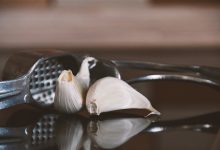
How to Make a Jasmine Rice
admin
- 0
Are you craving a bowl of delicious and fluffy jasmine rice? Look no further, because in this article, we will guide you through the step-by-step process of making this fragrant and popular variety of rice. Jasmine rice is commonly used in Asian cuisine and is known for its enticing aroma and delicate texture. By following our instructions, you’ll be able to cook perfect jasmine rice every time.
To start, let’s talk about the key factors to consider when choosing jasmine rice. The aroma, texture, and origin of the rice all play a role in determining its quality and flavor. Look for rice that has a pleasant and fragrant scent, as this is a sign of freshness. Additionally, the texture should be slightly sticky but still have individual grains that are fluffy and tender. Lastly, consider the origin of the rice, as different regions produce rice with distinct flavors and characteristics.
Choosing the Right Jasmine Rice
Table of Contents
ToggleWhen it comes to selecting the perfect jasmine rice for your dish, there are a few key factors to keep in mind. These factors include the aroma, texture, and origin of the rice. By considering these aspects, you can ensure that you are getting the best quality and flavor in your meal.
Aroma: One of the defining characteristics of jasmine rice is its fragrant aroma. The rice should have a pleasant and distinct smell that is reminiscent of pandan leaves or popcorn. When choosing jasmine rice, take a moment to inhale its aroma and ensure that it is enticing and inviting.
Texture: Jasmine rice should have a soft and slightly sticky texture when cooked. It should not be overly mushy or clumpy. Look for rice grains that are plump and tender, with a slight bite to them. This will ensure that your jasmine rice has the perfect texture when served.
Origin: The origin of jasmine rice can also play a role in its quality and flavor. Some of the best jasmine rice comes from Thailand, where it is grown in the fertile soil of the Mekong River. Thai jasmine rice is known for its superior taste and aroma. However, there are also other regions that produce excellent jasmine rice, so it’s worth exploring different options.
By considering these factors, you can choose the right jasmine rice that will elevate your dish and provide you with a delightful dining experience. So, take your time, explore different brands and varieties, and select the perfect jasmine rice that suits your taste and preferences.
Preparing the Rice
Preparing the Rice
When it comes to making perfect jasmine rice, the preparation process is key. Follow these simple instructions on how to properly wash and soak jasmine rice before cooking to achieve a fluffy and delicious result.
Washing the Rice
The first step in preparing jasmine rice is to wash it thoroughly. This helps remove any impurities and excess starch, resulting in a cleaner and more polished grain. To wash the rice, follow these steps:
- Rinse the rice under cold water in a fine-mesh strainer.
- Gently rub the grains together with your fingers to remove any dirt or debris.
- Continue rinsing until the water runs clear.
Soaking the Rice
Soaking jasmine rice before cooking is an important step that helps soften the grains and ensures even cooking throughout the pot. Here’s how to soak jasmine rice:
- Transfer the washed rice to a bowl.
- Add enough cold water to cover the rice completely.
- Let the rice soak for at least 30 minutes, or up to 2 hours for best results.
Draining the Rice
After soaking, it’s important to drain the rice properly to remove any excess water. This prevents the rice from becoming mushy during cooking. Here’s the recommended method for draining jasmine rice:
- Place a fine-mesh strainer over a sink or a bowl.
- Pour the soaked rice into the strainer and let the water drain completely.
- Gently shake the strainer to remove any remaining water.
By following these simple steps to wash, soak, and drain jasmine rice, you’ll enhance its fluffiness and ensure a perfect texture in your dishes.
Washing the Rice
When it comes to cooking jasmine rice, one crucial step is washing the rice before cooking. This step is essential to remove any impurities and ensure a clean and polished grain, resulting in a better final texture. By rinsing the rice, you can also get rid of any excess starch that may cause the rice to become sticky.
To wash jasmine rice, start by measuring the desired amount of rice and placing it in a large bowl. Fill the bowl with cold water, covering the rice completely. Gently swish the rice around with your hands, allowing the water to loosen any dirt or debris that may be present.
Next, carefully pour out the cloudy water, being sure to keep the rice in the bowl. Repeat this process of adding water, swishing the rice, and draining the water until the water runs clear. This may take about three to four rinses, depending on the rice.
Once the rice is thoroughly rinsed, it is ready to be cooked. By washing the rice, you have removed any impurities and ensured a clean and polished grain, resulting in a better final texture. So remember, don’t skip the step of washing jasmine rice for a delicious and fluffy end result.
Soaking the Rice
Soaking the rice is a crucial step in preparing jasmine rice. By soaking the rice before cooking, you can achieve perfectly cooked grains that are soft and fluffy. So why is soaking important? Let’s dive into the details.
When you soak jasmine rice, you allow the grains to absorb water, which softens them and helps to evenly distribute heat during cooking. This ensures that each grain cooks at the same rate, resulting in a pot of rice with a consistent texture.
To soak jasmine rice, start by rinsing it thoroughly under cold water to remove any dirt or impurities. Then, place the rice in a bowl and add enough water to cover it completely. Let the rice soak for at least 30 minutes, but you can also leave it to soak for up to 2 hours for even better results.
During the soaking process, the rice absorbs water, which hydrates the grains and allows them to expand. This not only softens the rice but also helps to remove excess starch, resulting in fluffier and less sticky rice.
After the soaking time is up, drain the rice using a fine-mesh sieve or colander to remove the excess water. Make sure to drain it well to prevent the rice from becoming mushy during cooking.
Now that you understand the importance of soaking jasmine rice, you can confidently proceed to the next step in making your delicious and fragrant jasmine rice.
Draining the Rice
Draining the Rice
Once you have soaked the jasmine rice, it is important to drain it properly before cooking. This step helps remove excess water and prevents the rice from becoming mushy during cooking. Here is the recommended method for draining the soaked jasmine rice:
- Place a fine-mesh sieve or colander over a sink.
- Gently pour the soaked rice into the sieve or colander.
- Allow the water to drain out completely.
- Gently shake the sieve or colander to remove any remaining water.
By draining the rice thoroughly, you ensure that the grains are not waterlogged, which can lead to a sticky and clumpy texture. This step is essential for achieving fluffy and separate grains of jasmine rice.
Cooking the Rice
Cooking the Rice
Mastering the art of cooking jasmine rice to perfection requires attention to detail and proper technique. Follow these steps to achieve fluffy and separate grains that will elevate your dish:
- Water-to-Rice Ratio: The ideal water-to-rice ratio for cooking jasmine rice is 1:1.5. This means that for every cup of rice, you should use 1.5 cups of water. This ratio ensures that the rice cooks evenly and absorbs the right amount of moisture.
- Cooking Time: Once you have measured the rice and water, bring the mixture to a boil over medium heat. Then, reduce the heat to low and cover the pot with a tight-fitting lid. Allow the rice to simmer for about 15-20 minutes. Avoid lifting the lid during this time, as it can disrupt the cooking process.
- Techniques for Fluffy Grains: To achieve fluffy and separate grains, it’s important to let the rice rest for a few minutes after cooking. This allows the steam to distribute evenly and further enhances the texture. Once the cooking time is complete, remove the pot from the heat and let it sit, covered, for about 5 minutes. Then, use a fork or chopsticks to gently fluff the rice, separating the grains.
By following these guidelines, you can ensure that your jasmine rice turns out perfectly cooked every time. The fluffy and aromatic grains will complement any Asian-inspired dish, from stir-fries to curries.
Serving and Storing Jasmine Rice
Jasmine rice is not only delicious and fragrant, but it also adds a touch of elegance to any meal. To ensure you serve the best possible jasmine rice, there are a few key practices to keep in mind.
When it comes to serving jasmine rice, fluffing is essential. After cooking, use a fork or chopsticks to gently separate the grains. This process helps create a light and airy texture, ensuring each bite is a delight. Additionally, consider garnishing your jasmine rice with fresh herbs, such as cilantro or green onions, to add a burst of color and flavor.
Storing leftover jasmine rice properly is crucial to maintain its freshness and quality. After it has cooled down, transfer the rice into an airtight container and refrigerate it promptly. This will prevent it from drying out or becoming too sticky. When reheating, sprinkle a little water over the rice and cover it with a damp paper towel to retain moisture.
Lastly, jasmine rice is incredibly versatile and can be incorporated into various dishes. Try using it as a base for stir-fries, fried rice, or rice salads. You can even use it in desserts like rice pudding or mango sticky rice for a unique twist. The fragrant aroma and delicate flavor of jasmine rice will elevate any dish to new heights.
Fluffing the Rice
Fluffing the cooked jasmine rice is an essential step to achieve that perfect light and airy texture. This simple technique helps separate the grains and prevents the rice from clumping together. To fluff the rice, you can use a fork or chopsticks, whichever you find more comfortable.
Start by gently inserting the fork or chopsticks into the rice and lightly stirring it in a lifting motion. This will help loosen any clumps and create space between the grains. Be careful not to overmix or vigorously stir the rice, as it can break the grains and affect the texture.
Continue to gently fluff the rice until all the grains are separated and the texture appears light and fluffy. Take your time and be patient with this step, as it can make a significant difference in the final presentation and enjoyment of your jasmine rice dish.
Storing Leftover Rice
When it comes to storing leftover jasmine rice, it’s important to follow proper storage methods to maintain its freshness and prevent it from drying out or becoming too sticky. Here are some tips to help you store your leftover jasmine rice:
- Transfer the leftover rice to an airtight container or resealable plastic bag. This will help prevent moisture from escaping and keep the rice fresh.
- Store the rice in the refrigerator as soon as possible after cooking. It’s best to refrigerate it within two hours to minimize the risk of bacterial growth.
- Label the container or bag with the date to keep track of how long the rice has been stored.
- When reheating the rice, add a small amount of water or broth to help restore moisture and prevent it from drying out.
- Avoid storing leftover rice at room temperature for an extended period, as it can quickly become a breeding ground for bacteria.
- If you have a large amount of leftover rice, consider dividing it into smaller portions before storing. This way, you can thaw and reheat only the amount you need, reducing waste.
By following these storage methods, you can enjoy leftover jasmine rice that is still fresh and delicious for your next meal.
Using Jasmine Rice in Other Dishes
When it comes to using jasmine rice in other dishes, the possibilities are endless. This fragrant variety of rice can add a delightful twist to a wide range of recipes, from savory stir-fries to sweet desserts. Here are some creative ideas to inspire you:
- Stir-fries: Jasmine rice pairs perfectly with stir-fried vegetables and protein, creating a delicious and aromatic meal. The fluffy texture of the rice absorbs the flavors of the stir-fry sauce, resulting in a mouthwatering combination.
- Fried rice: Transform leftover jasmine rice into a flavorful fried rice dish. Add your choice of vegetables, protein, and seasonings to create a quick and satisfying meal that is bursting with fragrant flavors.
- Rice salads: Combine cooked jasmine rice with fresh vegetables, herbs, and a tangy dressing to create a refreshing rice salad. This versatile dish can be enjoyed as a side or a light main course, perfect for warm weather.
- Desserts: Yes, jasmine rice can even be used in desserts! Try making a creamy rice pudding infused with jasmine flavor, or use cooked jasmine rice as a base for fruity rice puddings or even rice cakes.
By incorporating jasmine rice into these different dishes, you can elevate your meals with its unique aroma and taste. Don’t be afraid to experiment and get creative in the kitchen!
Frequently Asked Questions
- Q: How do I choose the best quality jasmine rice?
A: When selecting jasmine rice, consider its aroma, texture, and origin. Look for rice with a fragrant scent, long and slender grains, and a reputable brand or origin known for producing high-quality rice.
- Q: Why is it important to wash jasmine rice before cooking?
A: Washing jasmine rice helps remove excess starch, resulting in fluffier cooked rice. It also helps eliminate any impurities and ensures a clean and polished grain, enhancing the final texture of the rice.
- Q: How long should I soak jasmine rice?
A: Soaking jasmine rice for at least 30 minutes before cooking is recommended. This process softens the grains and ensures even cooking throughout the pot.
- Q: What is the ideal water-to-rice ratio for cooking jasmine rice?
A: The general rule of thumb is to use a 1:1.5 ratio of rice to water. For example, if you’re cooking 1 cup of rice, use 1.5 cups of water. Adjust the ratio slightly based on personal preference for softer or firmer rice.
- Q: How can I fluff cooked jasmine rice?
A: To fluff cooked jasmine rice, use a fork or chopsticks to gently separate the grains. This technique creates a light and airy texture, ensuring each grain is separate and not clumped together.
- Q: Can I store leftover jasmine rice?
A: Yes, you can store leftover jasmine rice. Place it in an airtight container and refrigerate it promptly. It’s best to consume the leftovers within 2-3 days to maintain freshness and prevent it from drying out or becoming too sticky.
- Q: How can I incorporate jasmine rice into other dishes?
A: Jasmine rice can be used in various recipes such as stir-fries, fried rice, rice salads, and even desserts. Its fragrant aroma adds a delightful twist to these dishes, enhancing their flavors.


